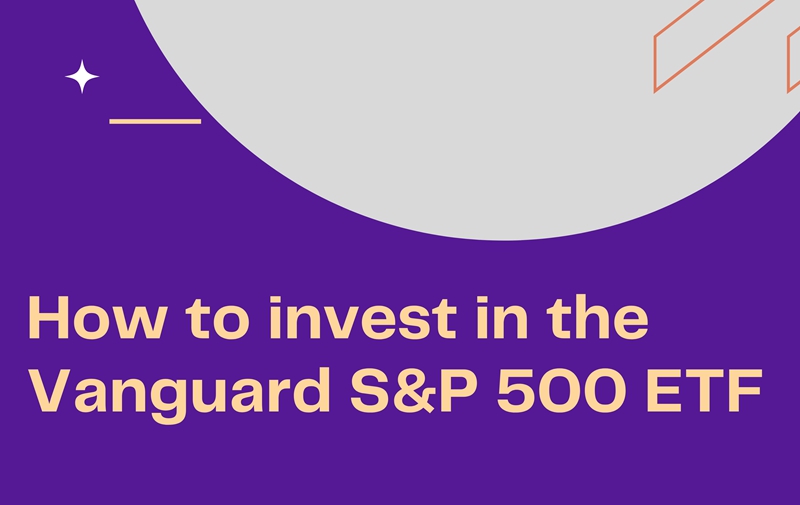Maximize Your Portfolio: The Ultimate Guide to Investing in Vanguard S&P 500

In today’s fast-paced financial landscape, maximizing your portfolio is not just a goal; it’s a necessity. If you’re looking to tap into the steady growth potential of one of the most respected names in investment, this ultimate guide to investing in the Vanguard S&P 500 is your key to success. Vanguard’s S&P 500 fund offers a unique combination of diversification and reliability, making it ideal for both novice investors and seasoned pros. With a focus on the top 500 U.S. companies, this investment vehicle provides access to the heart of the American economy, creating a powerful foundation for your financial future.
Understanding Index Fund Investing
Index funds simplify investing by tracking market benchmarks like the S&P 500. Unlike actively managed funds, they aim to mirror market performance rather than beat it. This passive approach minimizes fees and eliminates the risk of poor stock-picking decisions.
Additionally, index funds provide instant diversification. For example, owning shares in an S&P 500 fund means holding small stakes in 500 large U.S. companies. This spreads risk and reduces the impact of any single company’s poor performance.
Benefits of Investing in the Vanguard S&P 500
The Vanguard S&P 500 ETF (VOO) or Mutual Fund (VFIAX) offers low expense ratios—0.03% for VOO—making it one of the cheapest ways to invest in the index. Lower fees mean more of your returns stay invested over time.
Historically, the S&P 500 has delivered average annual returns of about 10%. While past performance doesn’t guarantee future results, the index’s long-term growth trend makes it a cornerstone for wealth-building. Vanguard’s structure also prioritizes investor interests, as the company is owned by its fund shareholders.
How to Get Started with Vanguard S&P 500
First, open a brokerage account. Many platforms, including Vanguard, Fidelity, or Charles Schwab, let you buy VOO or VFIAX. Compare fees and tools each platform offers. For hands-off investors, automate monthly contributions to build wealth steadily.
Next, decide between the ETF (VOO) or mutual fund (VFIAX)。 ETFs trade like stocks, allowing intraday purchases, while mutual funds settle once daily. Choose based on your preference for flexibility or simplicity.
Key Features of Vanguard S&P 500 Funds
Vanguard’s S&P 500 funds boast near-perfect tracking of the index. Their low turnover ratio minimizes taxable events, which benefits investors in non-retirement accounts. Dividends are also reinvested automatically, accelerating compound growth.
Moreover, Vanguard’s funds are highly liquid. You can buy or sell shares quickly without significant price deviations from the underlying index. This liquidity ensures easy access to your money when needed.
Comparing Vanguard S&P 500 to Other Investment Options
Unlike actively managed funds, Vanguard’s S&P 500 funds avoid high fees (often 1%+ for active managers) and inconsistent performance. For example, over 10 years, nearly 90% of active U.S. stock funds underperform the S&P 500.
Compared to other index funds, Vanguard’s expense ratios are among the lowest. Competitors like iShares Core S&P 500 ETF (IVV) or SPDR S&P 500 ETF (SPY) charge slightly higher fees (0.03-0.09%), though differences are marginal.
Strategies for Maximizing Returns with Vanguard S&P 500
Use dollar-cost averaging (DCA) to invest regularly, regardless of market highs or lows. This reduces timing risk and smooths out volatility. For instance, investing $500 monthly builds discipline and leverages market dips.
Reinvest dividends to harness compounding. Over decades, reinvested dividends can account for over 40% of total returns in the S&P 500. Pair this with a long-term mindset to avoid emotional decisions during market swings.
Common Mistakes to Avoid When Investing
Avoid chasing “hot” sectors or timing the market. The S&P 500’s strength lies in its diversification—overweighting tech or energy stocks undermines this balance. Stick to the index’s natural allocation.
Also, don’t over-trade. Frequent buying/selling triggers taxes and fees, eroding returns. Set a plan, automate contributions, and review your portfolio only quarterly or annually.
Long-Term vs. Short-Term Investment Approaches
The S&P 500 shines as a long-term investment. Holding for 10+ years lets you ride out recessions and benefit from recovery cycles. Short-term trading, however, exposes you to volatility and taxes on gains.
Warren Buffett famously recommended holding S&P 500 index funds indefinitely. His advice aligns with historical data showing that time in the market beats timing the market.
Conclusion: Making Informed Investment Decisions
Vanguard’s S&P 500 funds offer simplicity, affordability, and proven growth potential. By avoiding common pitfalls and staying committed to a long-term strategy, you can build substantial wealth passively.
Diversify further by pairing the S&P 500 with bonds or international index funds, depending on your risk tolerance. Regularly educate yourself on market trends, but resist impulsive changes. Consistency and patience will always be your greatest allies in investing.